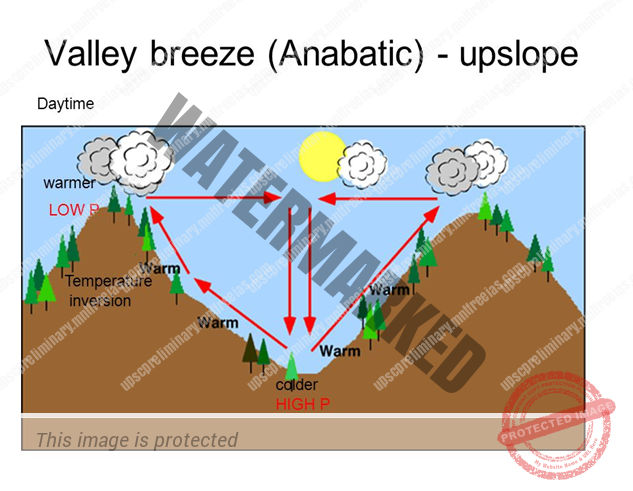- INVERSION OF TEMPERATUR
- TYPES OF TEMPERATURE INVERSION
UNIT 4 – CLIMATOLOGY – PART 10
In general, the temperature of air at any place is influenced by
- The Latitude of The Place
- The Altitude of The Place
- Distance From the Sea, The Airmass Circulation
- The Presence of Warm And Cold Ocean Currents
- Local Aspects.
INVERSION OF TEMPERATURE
The condition at which the temperature increases with altitude is called as ‘Inversion Of Temperature’. In this condition, warm air lies over cold air.
THE CONDITIONS FOR INVERSION OF TEMPERATURE ARE:
- LONG WINTER NIGHTS: The bottom layer of the atmosphere in contact with the ground is cooled and the upper layer remains relatively warm.
- CLOUDLESS SKY: The higher amount of terrestrial radiation reaches the higher altitude which leads to lower temperature at low level due to clear sky.
- DRY AIR NEAR THE SURFACE: the dry air absorbs less terrestrial radiation and allows them to escape into space.
- SNOW COVERED GROUND: During night, due to terrestrial radiation and higher albedo, most of the heat is lost to the atmosphere and the surface is cooled.
- FORMATION OF FRONTS: the movement of warm air over the cold air during the formation of the various fronts leads to inversion condition.
- MOUNTAIN WIND: The subsidence of cold mountain wind at the early morning leads to the displacement of warm air from the valley to higher altitude. This type of inversion is called as ‘valley inversion’
EFFECTS
Inversions play an important role in Determining Cloud Forms, Precipitation, And Visibility.
In regions where a pronounced low-level inversion is present, convective clouds cannot grow high enough to produce showers.
Visibility may be greatly reduced below the inversion due to the accumulation of dust and smoke particles. Because air near the base of an inversion tends to be cool, fog is frequently present there.
Inversions also affect diurnal variations in temperature. Diurnal variations tend to be very small.
TYPES OF TEMPERATURE INVERSION
VALLEY BREEZE
Due to the intense insolation during the daytime, the slopes of the mountain heat up rapidly but the free atmosphere above the lowlands is not heated to some extent. As the valleys receive comparatively lesser insolation so relatively high pressure sets up in the valleys while along the mountain slopes due to more heating the warm air is uplifted, and low pressure sets up.
Thus, the air moves from the Valleys towards the slopes (High pressure to the low pressure) and this upslope movement of Air Is Known as Valley Breeze. Valley breezes are also known as ANABATIC WIND.
Weather associated with the Valley Breeze because heavy Orographic rainfall causes occasional and afternoon thundershowers on warm and humid days.

